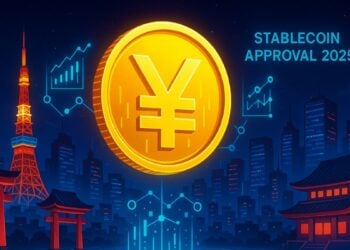In a striking endorsement of the evolving digital asset landscape, Ripple has revealed that some of the world’s largest traditional finance (TradFi) institutions—Citigroup, JPMorgan, and Goldman Sachs—are now actively investing in blockchain and tokenization strategies. The report, titled Banking on Digital Assets, signals a growing institutional shift that could redefine the role of blockchain across global finance.
Table of Contents
ToggleRipple Report Reveals TradFi’s Blockchain Momentum
According to the official Ripple report, nearly every major financial institution surveyed has already deployed or is planning to deploy blockchain-based infrastructure. From tokenized deposits and stablecoins to smart contracts and cross-border settlement tools, blockchain technology is no longer a speculative experiment—it’s becoming a structural priority.
More than 70% of surveyed finance leaders said they plan to adopt tokenization strategies within the next three years. Ripple notes that asset tokenization is viewed as the most impactful blockchain use case by both banking executives and institutional investors, highlighting a growing convergence between TradFi innovation and crypto-native infrastructure.
JPMorgan, Citi, and Goldman Sachs Lead the Pack
Among the most active players are JPMorgan, Citigroup, and Goldman Sachs—firms traditionally cautious about crypto. But that’s changing fast.
G-SIBs investments in blockchain companies. Source: Ripple
JPMorgan has been building out its Onyx platform, a blockchain-powered settlement and payments network already processing billions in transactions. The bank’s JPM Coin continues to gain traction in facilitating real-time cross-border transfers for corporate clients.
Meanwhile, Citigroup is doubling down on tokenization through its Citi Token Services, offering clients programmable digital money that operates 24/7 across borders. Citi has also been vocal about the trillion-dollar potential of blockchain-based assets in capital markets.
Goldman Sachs, on the other hand, has launched GS DAP, its digital asset platform for tokenized bonds, and recently participated in a test run for settling tokenized green bonds in Hong Kong—a clear sign that blockchain is making inroads into fixed-income markets as well.
Why Ripple Is Watching TradFi Closely
Ripple, a long-time advocate for institutional blockchain adoption, is positioning itself as a key infrastructure provider in this transition. Its RippleNet and On-Demand Liquidity (ODL) products are already integrated with over 55 countries and hundreds of banking partners, streamlining international remittances and FX operations using XRP as a bridge currency.
What makes this new report notable is Ripple’s tone—it no longer positions itself as a disruptor challenging banks, but rather as a collaborator enabling them. The company emphasizes that the convergence between blockchain and TradFi is accelerating due to global macro factors like inflation, settlement inefficiencies, and the search for new yield opportunities.
Beyond Payments: Tokenization of Real-World Assets
One of the most promising areas cited in Ripple’s findings is the tokenization of real-world assets (RWAs), such as real estate, commodities, and public equities. The report underscores that tokenized RWAs could surpass $16 trillion in value by 2030, driven by better liquidity, fractional ownership, and instant settlement.
Financial institutions surveyed by Ripple also cite regulatory clarity as a key catalyst. In jurisdictions like the UAE, UK, and Singapore, regulatory sandboxes and pilot programs are already laying the groundwork for tokenized products. Meanwhile, in the US, momentum appears to be building—despite delays—with both the SEC and CFTC taking more defined stances on digital asset regulation.
Final Thoughts: What This Means for Ripple and the Future of Finance
The latest Ripple report confirms what many in the crypto industry have speculated for years—the lines between TradFi and crypto are blurring fast. When legacy titans like Citigroup, JPMorgan, and Goldman Sachs commit billions to blockchain R&D and product development, it signals not just a tech trend, but a long-term strategic shift.
For Ripple, this shift validates its decade-long effort to bring blockchain to financial institutions. It’s no longer about asking banks to join the revolution—it’s about empowering them to lead it. With its infrastructure already supporting fast, low-cost cross-border payments and tokenized asset settlement, Ripple is poised to be one of the biggest beneficiaries of the institutional pivot to blockchain.As Ripple continues to expand its partnerships and regulatory footprint, 2025 may be the year it becomes synonymous not only with XRP but with institutional blockchain finance as a whole.

















